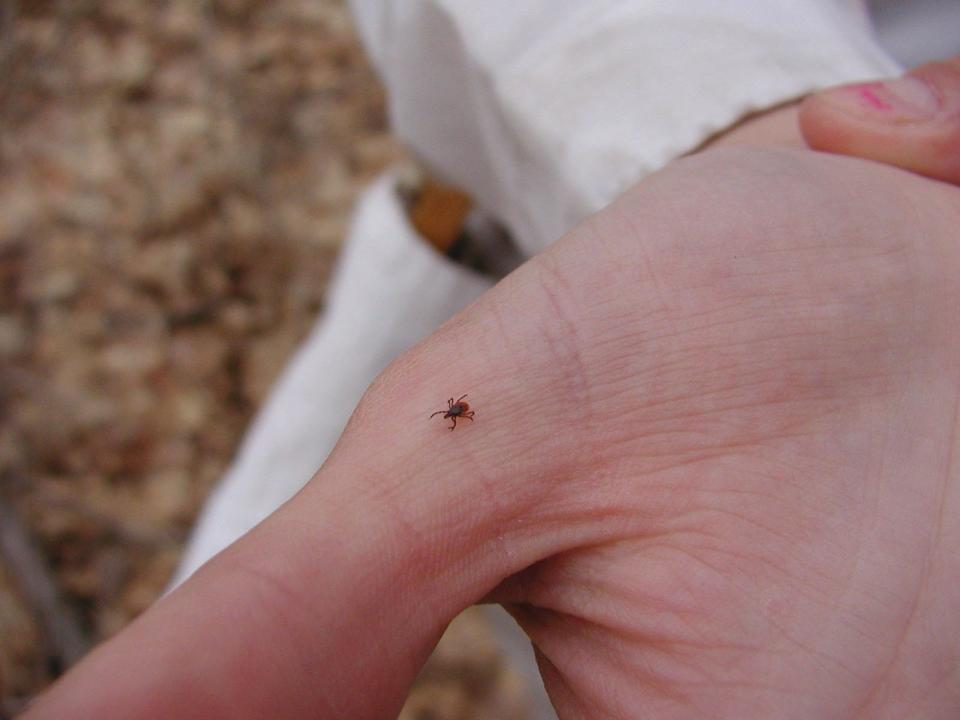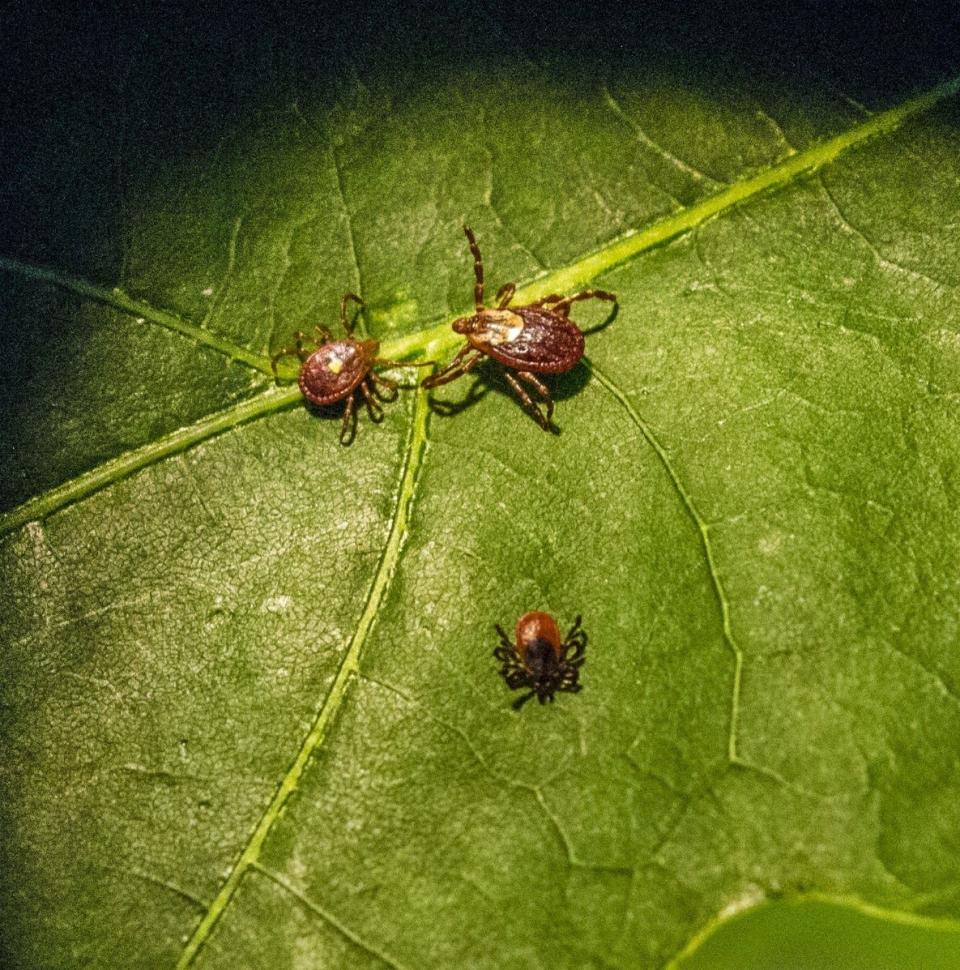Ick! It's tick season. What you should know about the pesky parasites in Illinois
PEORIA – Ticks equal ick.
There's not much to like about a species that can cause disease. But if you live in the Midwest and like to be outside during the spring and summer months, there's no avoiding the chance of having a tick latch on.
Ticks are parasitic arachnids, meaning they come from the same family as spiders. There are about 200 species in the United States, and several are found here in Illinois. They are very common in the Midwest, as Scouts, hikers and, well, just about anyone who spends time outside knows.
And they are a pest. According to the Illinois Department of Public Health, the state saw infections increase for four of the five major tick-borne diseases in 2021 from 2020. The most common is Lyme disease, but there is a new emerging illness that is tick-borne. Called alpha-gal syndrome, it's commonly known as "red-meat allergy."
"Growing evidence suggests that AGS may be triggered by the bite of a lone star tick in the United States, but other kinds of ticks have not been ruled out. Other tick species have been connected with the development of AGS in other countries," the Centers for Disease Control and Prevention says on its website.
Mostly, Illinois residents should worry about Lyme disease. There were 539 cases of Lyme disease in Illinois in 2021, according to the IDPH. The next highest disease that was caused by a tick was ehrlichiosis, which only had 48 cases.
According to the CDC's website, typical Lyme disease symptoms include fever, headache, fatigue and a characteristic skin rash called erythema migrans. If left untreated, infection can spread to joints, the heart and the nervous system, the CDC says.
We asked Brianna Gardner, who is the environmental health programs coordinator at the Peoria City/County Health Department, a few questions regarding the little pests.
Forget swabs up the nose: Peoria's sewage might help track down the next COVID outbreak

When is tick season and what types are found here?
Tick season typically begins in late March and ends in November. Ticks can be active any time the temperature is above freezing. Common species to the area include the blacklegged tick, the lone star tick, the Gulf Coast tick and the American dog tick. (For more information on the various species of tick, click here)
Where can people get ticks?
Ticks can be found in wooded areas, forests, tall grasses and grassy areas, areas with lots of brush, and leaf litter.
Beware of that wildflower bouquet: This invasive plant found in Illinois can kill
Where on the body are they often found?
Ticks move quickly and prefer areas on the body that are warm and moist. They are most often found in the armpits, groin or on the scalp. Other common areas are between joints such as knees and elbows and behind ears.
Are there repellents or sprays that keep ticks away?
The CDC recommends Environmental Protection Agency-registered insect repellants containing DEET, picaridin, IR3535, oil of lemon eucalyptus, para-menthane-diol, or 2-undecanone. The EPA has a helpful tool to find the right repellant for you.

Can tick bites be fatal?
We have not had any fatalities from tick-borne diseases in the area, as Lyme disease is rare as a cause of death in the United States.
Last year: Tick-borne illnesses diagnosed in two Tazewell County residents; look for these symptoms
What about pets?
The CDC recommends talking to your veterinarian about the best tick prevention products for your pet and tick-borne diseases in the area that could affect your pet. To further reduce the chances that a tick bite will make your pet sick, check your pets daily after they are outdoors during tick season. If you find a tick, remove it right away, and reduce tick habitat in your yard by mowing regularly, removing leaf litter and brush.
A tick has latched on! What should I do?
So what do you do if you find a tick? The first answer is pretty universal: Remove the tick immediately. The reasoning is that the faster you remove it, the less chance it has to feed and to spread bloodborne pathogens or things that make you sick.
But how do you do that? The CDC has a tick safety page, which includes a section on tick removal. In general, use a pair of fine-tipped tweezers and grasp the head of the embedded tick as close to the skin's surface as possible.
Then, pull up slowly and consistently. Don't handle the tick. Dispose of the tick by flushing it down the toilet or put it in alcohol. Scouting BSA also has a good guide that's written with young children in mind.
This article originally appeared on Journal Star: Tick season is here in Illinois. Here's what you can do about it

